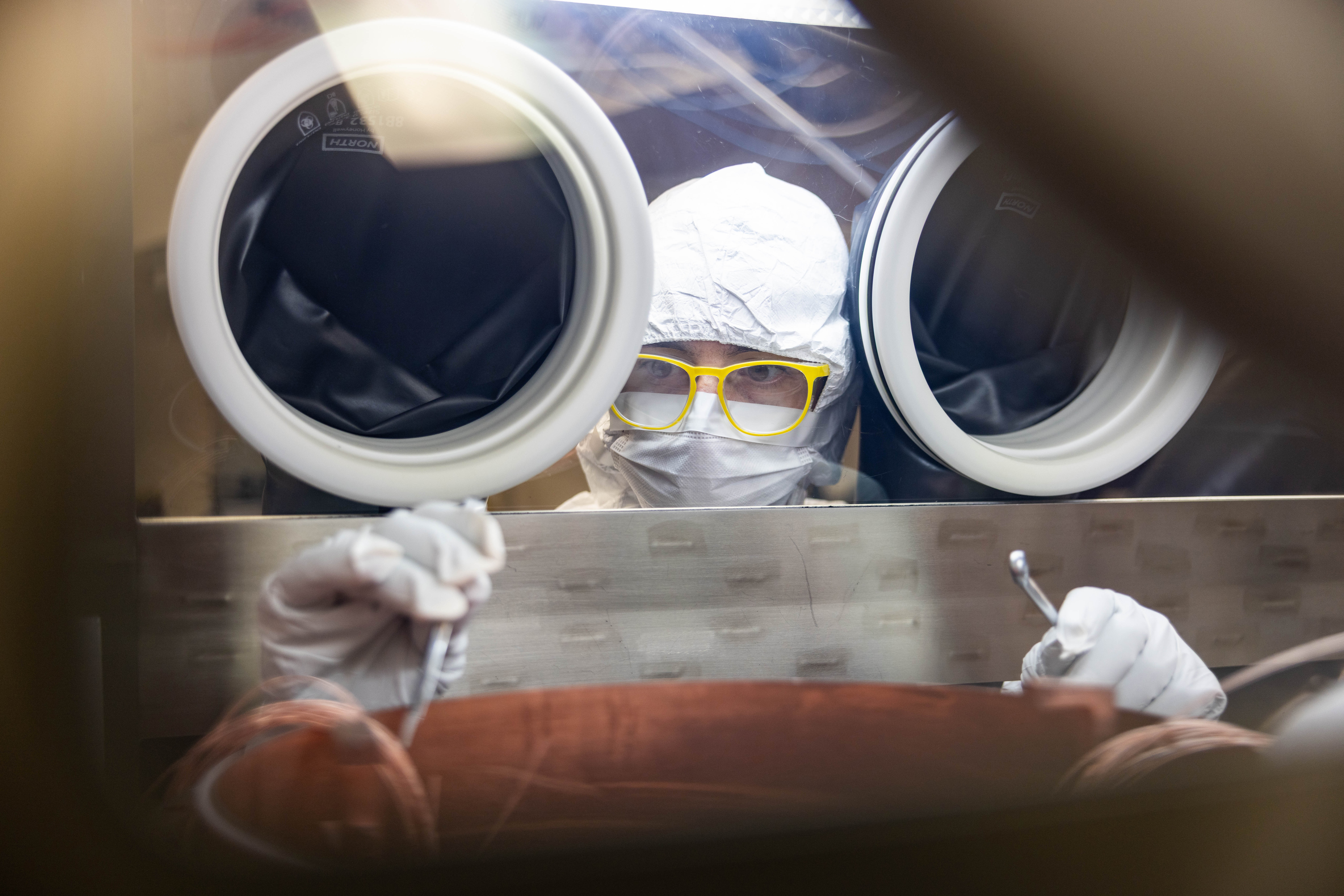South Dakota Mines Physics Undergrad Selected for Prestigious Nuclear Science Award

It was art that first drew Ryan Cantz to the world of physics.
After graduating high school in New Jersey, he wasn’t sure what direction to take.
“I was an 18-year-old trying to figure out life, and I didn’t want to commit to anything without knowing 100%,” said Cantz.
While searching for clarity, he immersed himself in music and art – passions that eventually opened the door to physics.
“I needed inspiration for my art, so I started studying physics concepts and then started buying textbooks just to do the practice problems. I thought maybe I should think about studying physics,” he said.
To test his idea, Cantz began spending his Saturdays attending public physics lectures at Princeton. After the lecture, he often wandered around campus, passing by Albert Einstein’s home and contemplating the work of physicists J. Robert Oppenheimer and Richard Feynman, both of whom had ties to the university.
“I found that my brain, whether I am creating art or doing physics, is not that different,” said Cantz, now a senior physics major at South Dakota Mines.
 Cantz chose Mines for his undergraduate studies because it offered affordability,
strong music opportunities and a direct connection to the Sanford Underground Research Facility (SURF), where he has worked since the summer after his freshman year.
Cantz chose Mines for his undergraduate studies because it offered affordability,
strong music opportunities and a direct connection to the Sanford Underground Research Facility (SURF), where he has worked since the summer after his freshman year.
Cantz has contributed to a wide range of projects at SURF, including investigating the rare nuclear isomer tantalum-180m within the MARJORANA system, electroforming copper to be used in sensitive experiments and assisting in the creation and cleaning of scintillating plastics – all under the guidance of Cabot-Ann Christofferson, senior research scientist in the Mines Department of Chemistry, Biology and Health Sciences.
Those projects led to his current research on the LEGEND-200 experiment—the first step in the search for neutrinoless double-beta decay—and earned him selection for the prestigious Conference Experience for Undergraduates (CEU) award, which gives top nuclear science students the chance to present their work, explore the field, and connect with leading scientists.
The CEU, launched in 1998 alongside the fall Division of Nuclear Physics (DNP) meeting, features a student research poster session and undergraduate-focused activities throughout the event. This year’s event is Oct. 17-20 in Chicago.
“I was so excited; I couldn’t believe it,” Cantz said after receiving news of the award. “It is very competitive and more selective each year.”
He immediately contacted Christofferson and Ian Guinn, Ph.D., a neutrino physicist
at the Oak Ridge National Laboratory, who oversees Cantz’s research.
Cantz is one of only a few students on the LEGEND–200 experiment to be selected for the CEU, and will present his research, “Optimizing Time-Zero in Germanium Detectors of LEGEND-200.”
Cantz is investigating the timing inaccuracy of the LEGEND-200 germanium detectors by comparing them to the more precise silicon photomultiplier detectors. “Knowing exactly when events occur in an experiment is critical. We have two types of detectors—one provides highly accurate timing, while the other does not. By using the silicon detectors as a reference point, we’re working to understand what’s causing the inaccuracies in the germanium detectors. My focus is figuring what factors are contributing to the error,” he said.
He explains his research further using the analogy of recording a song where a guitar and drum are supposed to come in on the same beat; however, the guitar lags behind. “A song recorded with a delay would not sound cohesive. It would be all over the place,” he said. “You want things happening when they are actually happening; that is what the time correction will do.”
Once Cantz determines the why, he will put together a plan for the best way to correct the detector’s timing errors. “We will figure out how to do the time error correction and then apply it to the whole experiment.”
To further illustrate his research with music, Cantz is working to turn the time-zero data in both the germanium and silicon photomultiplier detectors into sound. Then, during his research presentation at the DNP meeting, he will pan the sounds in two speakers, one with the germanium timing and the other with the silicon, so individuals can hear the error.
“I have been able to turn the data into audio, but I am still working on the coding,” he said. “I hope to have it ready to have a listening station by my presentation.”
Aside from being selected to present his research at the DNP in October, Cantz will travel with Christofferson’s group from Mines to the Gran Sasso National Laboratory in Italy in November, the home of the LEGEND-200 experiment.